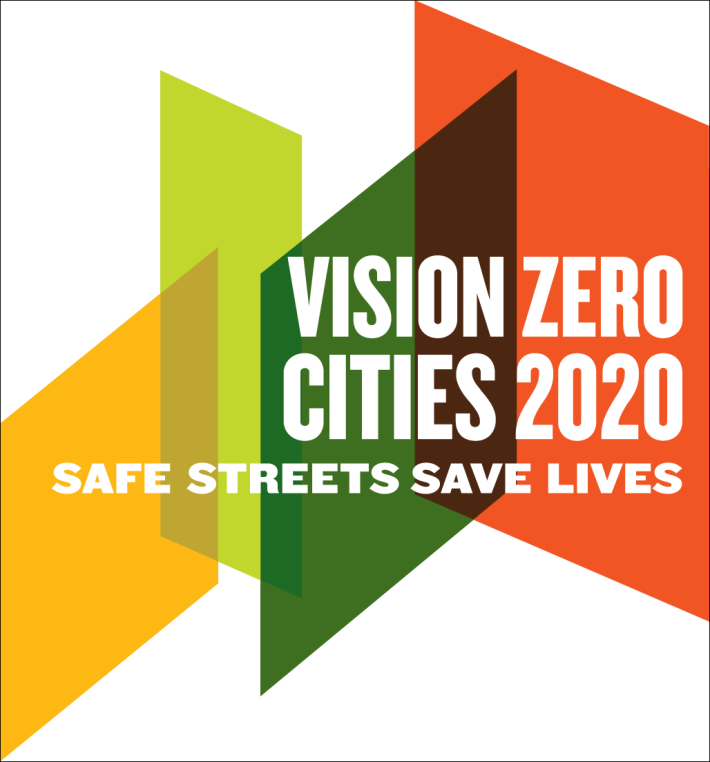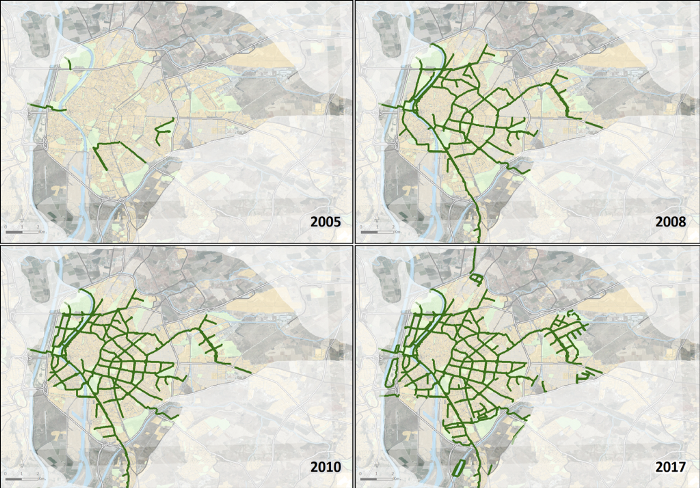This article will appear in Transportation Alternatives' Vision Zero Cities Journal as part of the 2020 Vision Zero Cities Conference, Oct. 19-23. You can still register for the conference at visionzerocities.org.
If anything, the coronavirus crisis has taught us how our cities lack resilience. It is no coincidence that the central argument for how we recover from this crisis is sustainability. And we in Seville have a story to tell about how to add resilience and sustainability to cities. In just two years, we transformed a city with almost no cyclists and seven miles of bike lanes, to a city where bikes have a central role in the urban mobility system.

While Seville, Spain, with around one in 10 trips made by bike, is still far from the cycling mobility figures of Amsterdam or Copenhagen (though more residents of Seville walk than in either of those cities), by rapidly building out a complete bike network, we managed to make cycling significant for everyday transportation and in the culture of the city. The secret to our success was treating cycling like a system of transportation — building an entire network of connected lanes, instead of a few disconnected lanes year after year. And getting it all done at once before the political winds changed.
By making cycling omnipresent in the urban landscape, we taught residents to see cycling as a means of transportation. Or to say it another way: If you build it, they will come.
Before the Bike Network
Seville, in southwestern Spain, is the country’s fourth-largest city, with a population of 700,000 in the city center, and 1.4 million in the whole metropolitan region. Like most other cities in southern Europe, vehicle traffic in Seville had grown for four decades before our intervention. But in the same period, people-mobility, measured as the number of trips per day and person, remained roughly the same — which means that, for four decades, car trips increased at the expense of walking trips.
It did not have to be this way. Seville is a city with a compact morphology characterized by high population density and a notable mixture of urban functions. But, this compact model is in sharp contrast with the metropolitan region outside the city, where low density and mono-functional built areas dominate, all of which developed in the last four decades. It is these areas that fostered increasing motorization. Our goal was to reset this unsustainable trend by building infrastructure that would provide other options to city residents.
How to Build a Bike Network
This story starts long before we started building bike lanes, all the way back in 1987, when Seville’s main cycling organization — A Contramano — was founded. From that time, A Contramano led many public demonstrations asking for cycling infrastructure and made several proposals to the city about how to effectively implement a network of bike lanes.
Activists’ demand went unheard until 2003 when a progressive coalition gained control of the city’s government. Finally, the call for cycling infrastructure had the political support and the political will required for a wholesale commitment to cycling. The first step to making that political will into reality was to design a comprehensive cycling network. Network is the important word here — to improve cycling as a mobility choice, we needed to treat cycling infrastructure as a system of connections, like roads or train tracks.
We broke the design of the network into phases, and the first phase connected major “trip attractors” in the city, such as work and educational centers, public transit hubs, and recreational spaces, such as squares, commercial streets, and green areas. This was done during the elaboration of the City Masterplan and included a parallel citizen participation process.
The result of this first phase was a nearly 50 mile-long network, but we did not plan these lanes at random. Rather, the network was defined by continuity, cohesion, visibility, and comfort.
First and foremost, the network was designed to connect “trip attractors” and residential areas of the city through a continuum of bike lanes. The design of the bike lanes was very similar throughout the network (green, bidirectional, seven to eight feet wide), so that cyclists, and people in general, could easily follow and recognize them. The network also followed the main streets and avenues of the city, and therefore was quite visible. As a general rule, detours and multiple street crossings were avoided. All in all, the whole network was designed to provide comfortable bicycle riding for people with no previous cycling experience, and space for the network came from car traffic roads and parking lanes. In this way, every aspect of the network’s design served our goal of moving people from cars to bikes.
Despite the detail of this design, we built quickly, and this was critical to our success. This first phase was constructed in less than two years during 2006 and 2007 — which meant that not just a few lanes but a whole network was under operation in a way that was not just quick, but complete. Our project was the network, not having pieces of unconnected bike lanes here and there. This is very important, and the main lesson of Seville’s success: Make a whole, basic, and comprehensive network and build it fast.
Two or three years later, this basic network was completed with the second wave of construction, increasing the total size of the network to 75 miles. Further developments have been undertaken since, and now Seville hosts a 112-mile network.
What Comes From Treating Cycle Lanes As Transportation
The result of this infrastructure building process was a parallel growth in cycling mobility. The number of cycling trips on a working day increased from approximately 13,000 to a peak of 72,000 — a 452 percent increase — in just three years. This came with a huge safety boon: Cycling in the city is twice as safe as it was when cycling infrastructure was nonexistent.
This transformative mobility shift did not occur in isolation. While a network of bike lanes made it possible, these numbers were aided by a concurrent installation of a public bike share system along the bike network. Also, the building of functional cycling infrastructure was accompanied by a more comprehensive move toward sustainable mobility in the city, including the pedestrianization of important areas and restrictions on car traffic.
This transformative mobility shift can also not be separated from the political will. After the 2011 economic crisis and the following social unrest, local government became less progressive, and cycling mobility stagnated. In 2015, when the local government changed again, and sustainability policies were readopted, cycling mobility began to recover. The last decade of change is ample evidence that political support is essential to make cycling mobility increase.

How to Transform Cycling In Your City
The dramatic shift in the use of cycling in Seville has taught us a great deal about what it takes to make transformative transportation change.
Political will is the key factor in developing sustainable mobility policies, but this political will must manifest in decisions regarding where to build infrastructure and how to manage the mobility system. It takes more than a pro-bike government; it takes making decisions based on how to achieve a real and significant change in mode share.
From a technical point of view, the knowledge needed to make things happen already exists, and there is no need to wait. Around the world, cities have all the tools needed to build safe, connected bike networks that are inviting to new cyclists. The hard part is ensuring that that focus remains on continuity, cohesion, visibility, and comfort. Wherever the correct design and policy decisions are made, people will respond in a good way, and as a result, the mobility system works better. The rewards are vast: economic, social, and health benefits, safer urban spaces, and better quality of life.
We are convinced that the experience of Seville could be applied to every city in the world that is ready to become more sustainable and resilient, and that wants more people to ride bikes and fewer to drive cars. The main lesson to dramatically shift transportation choices in your city is this: Make it happen all at once, and do it fast. Build a serious, connected network that is easy to use. To get people on bikes, make bike lanes that make sense as transportation for people.
Manuel Calvo is an independent consultant and sustainable mobility expert in Seville, Spain, and part of the team that led the Plan de la Bicicleta de Sevilla, a comprehensive instrument to promote cycling as a means of transportation, in which a protected bike lane network in Seville was built.
Ricardo Marqués is a professor at the University of Seville, a long-term activist in cycling promotion as a means of urban transportation and mobility and vice president of A Contramano.






